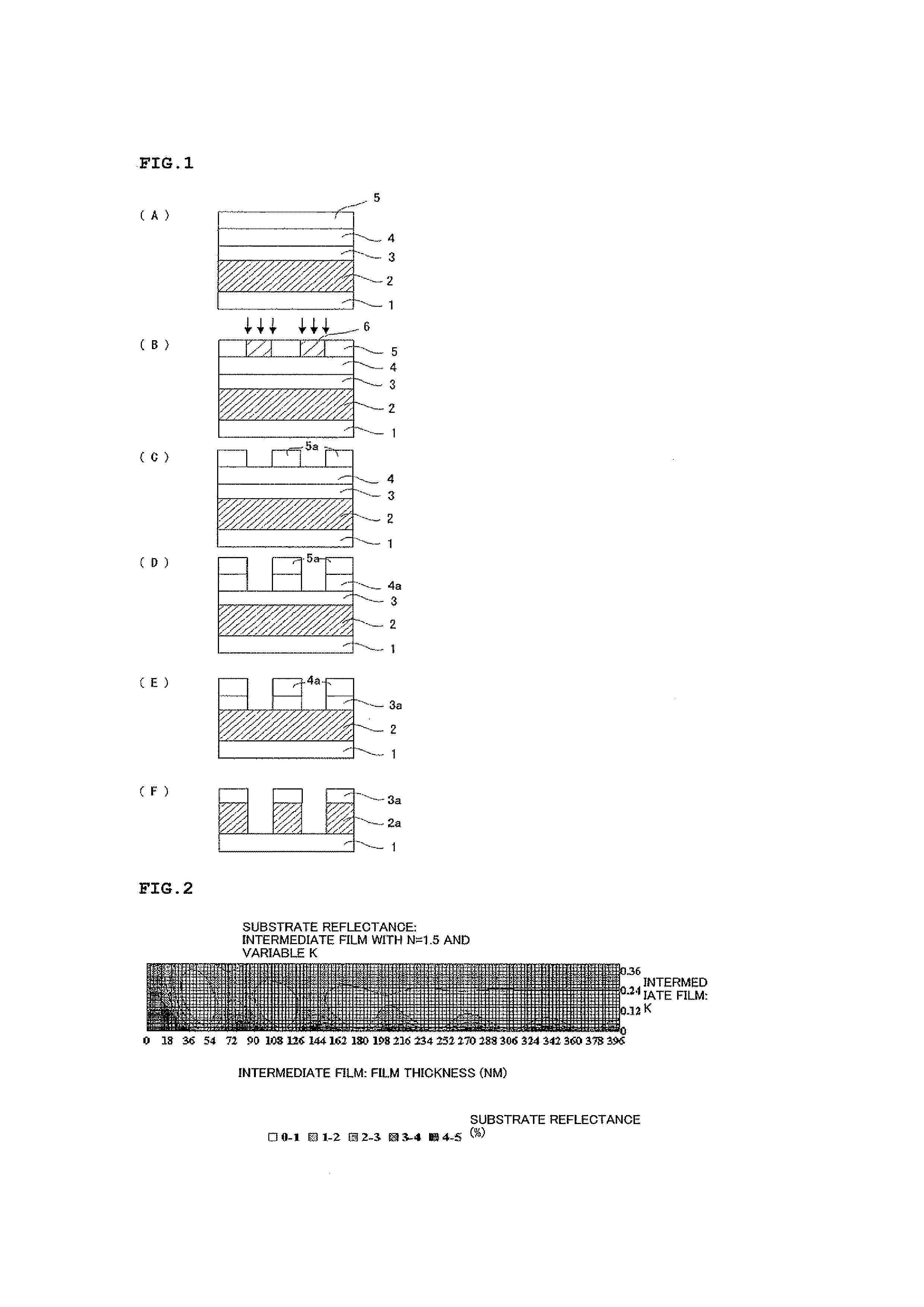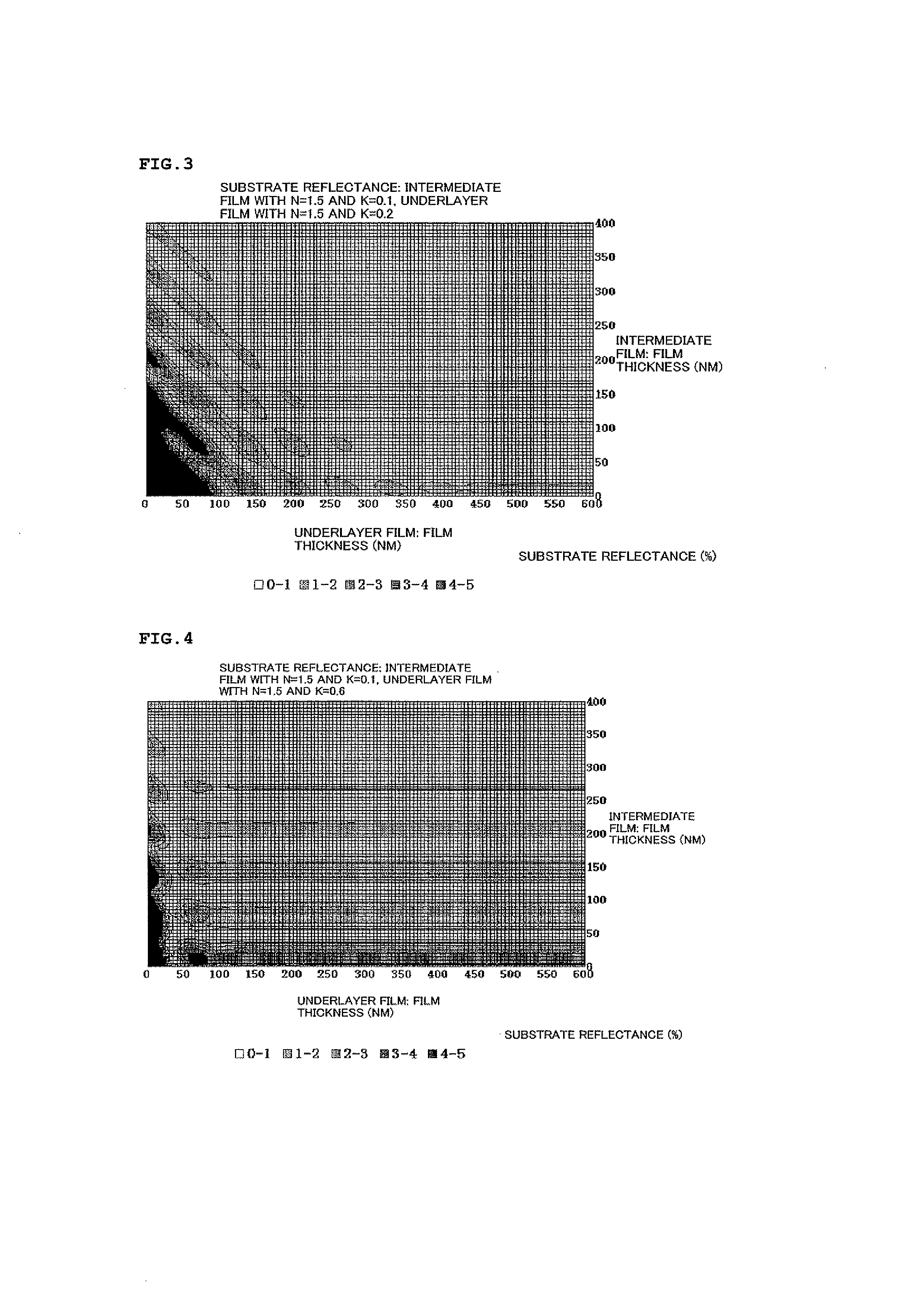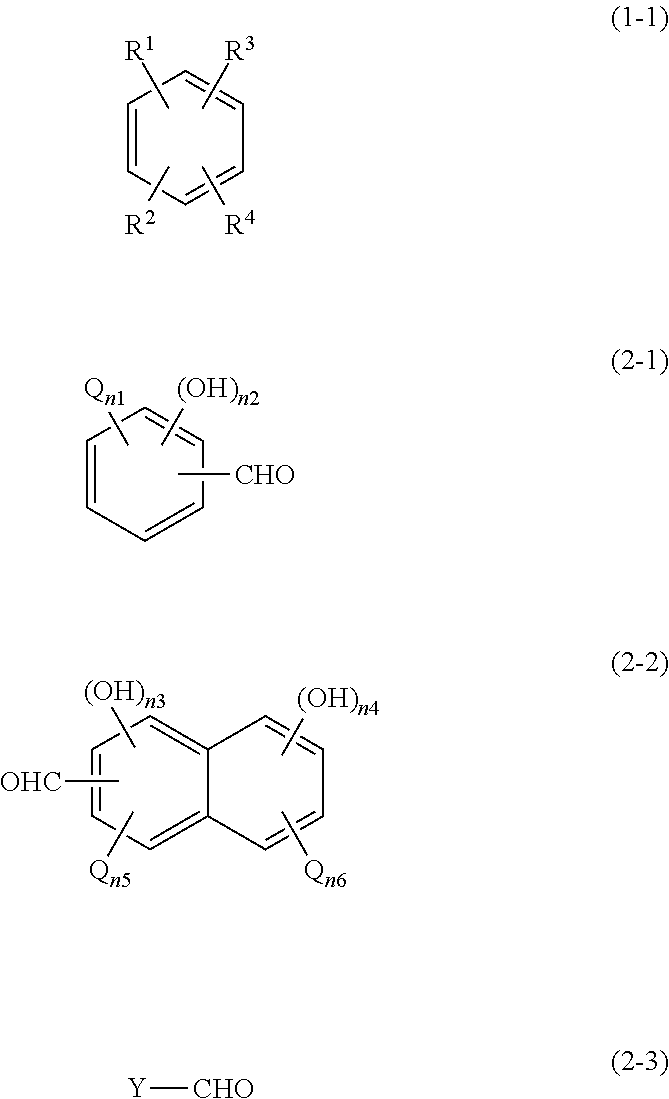Resist underlayer film composition, method for producing polymer for resist underlayer film, and patterning process using the resist underlayer film composition
a technology of resist and composition, which is applied in the direction of photosensitive materials, instruments, photomechanical equipment, etc., can solve the problems of difficult to fill up the difference in levels of flatness, unwound, and pattern fall during development, and achieve desirable n-value and k-value, excellent filling properties, and high transparency
- Summary
- Abstract
- Description
- Claims
- Application Information
AI Technical Summary
Benefits of technology
Problems solved by technology
Method used
Image
Examples
synthesis example 1
Condensed Body of 4-Hydroxybenzaldehyde with the Condensed Body of Resorcinol with Formaldehyde (Two-Step Preparation Method)
[0164]Into a 100-mL three-necked flask were weighed 5.00 g of Polymer 9 synthesized by the later-mentioned Comparative Synthesis Example 4, 1.00 g (8.19 mmole) of 4-hydroxybenzaldehyde, and 9.00 g of propylene glycol monomethyl ether (PGME); and then, they were heated to 60° C. with stirring. Thereinto was gradually added 1.25 g of a PGME solution of p-toluenesulfonic acid monohydrate with the concentration thereof being 20% by mass; and then, the reaction mixture was stirred for one hour. The temperature thereof was raised to 80° C.; and then, the stirring was continued for further 16.5 hours. After 24 g of ultrapure water and 30 g of ethyl acetate were added into the reaction solution, the resulting mixture was transferred to a separation funnel and then washed with 24 g of ultrapure water for 9 times to remove the acid catalyst and a metal impurity. After t...
synthesis example 2
Condensed Body of 4-Hydroxybenzaldehyde with the Condensed Body of Resorcinol with Formaldehyde (One-Pot Preparation Method)
[0165]Into a 500-mL three-necked flask were weighed 30.00 g (272.5 mole) of resorcinol, 7.50 g of a PGME solution of p-toluenesulfonic acid monohydrate with the concentration thereof being 20% by mass, and 54.00 g of PGME; and then, they were heated to 80° C. with stirring. Thereinto was gradually added 17.69 g of 37% formalin (218.0 mmole of formaldehyde); and then, the resulting mixture was stirred for 7 hours. Into the reaction mixture was gradually added a solution which was obtained by dissolving 14.97 g (122.6 mmole) of 4-hydroxybenzaldehyde into 30.00 g of PGME; and then, this mixture was stirred at 80° C. for further 16 hours. The reaction solution thereby obtained was diluted with 30 g of PGME and then added with 318 g of ultrapure water. The upper water layer and the lower layer of a high-concentration polymer solution were separated, and this upper l...
synthesis example 3
Condensed Body of 4-Hydroxybenzaldehyde with the Condensed Body of Resorcinol with Formaldehyde (One-Pot Preparation Method)
[0166]Into a 200-mL three-necked flask were weighed 20.00 g (181.6 mole) of resorcinol, 5.00 g of a PGME solution of p-toluenesulfonic acid monohydrate with the concentration thereof being 20% by mass, and 36.00 g of PGME; and then, they were heated to 80° C. with stirring. Thereinto was gradually added 11.79 g of 37% formalin (145.3 mmole of formaldehyde); and then, the resulting mixture was stirred for 16 hours and 20 minutes. Into the reaction mixture was gradually added a solution which was obtained by dissolving 4.44 g (36.3 mmole) of 4-hydroxybenzaldehyde into 9.00 g of PGME; and then, this mixture was stirred at 80° C. for further 10 hours and 30 minutes. Thereinto was gradually added a solution which was obtained by dissolving 2.22 g (18.2 mmole) of 4-hydroxybenzaldehyde into 4.50 g of PGME; and then, this mixture was stirred at 80° C. for further 19 ho...
PUM
| Property | Measurement | Unit |
|---|---|---|
| wavelength range | aaaaa | aaaaa |
| reflectance | aaaaa | aaaaa |
| thickness | aaaaa | aaaaa |
Abstract
Description
Claims
Application Information
 Login to View More
Login to View More - R&D
- Intellectual Property
- Life Sciences
- Materials
- Tech Scout
- Unparalleled Data Quality
- Higher Quality Content
- 60% Fewer Hallucinations
Browse by: Latest US Patents, China's latest patents, Technical Efficacy Thesaurus, Application Domain, Technology Topic, Popular Technical Reports.
© 2025 PatSnap. All rights reserved.Legal|Privacy policy|Modern Slavery Act Transparency Statement|Sitemap|About US| Contact US: help@patsnap.com



